Secure Checkout + FREE SHIPPING (U.S. Orders over $60)
Menu
-
- Home
-
About Us
-
The Approach
-
Linking Language & Literacy
-
Professional Learning
-
Learning Resources
-
SHOP
-
Blog
-
- About MindWing
- Our People
- Contact Us
- Your Account
- Login
-
United States (USD $)

Secure Checkout + FREE SHIPPING (U.S. Orders over $60)
Magnetic Spinner Activity for Narrative & Expository Text Questions
by Sheila Zagula May 20, 2016 2 min read
In today’s classrooms, students are being asked to comprehend more complex materials in earlier grades with a particular emphasis on expository texts. The blending of both narrative and expository texts in many reading selections make understanding these structures a cornerstone for student comprehension success. The iconic structure of the SGM® provides a concrete visual and tactile scaffold to teach these structures to children. The expository text structures “tie in” to the narrative sequence.

The “Core” of the Core manual explains this connection in detail showing how each narrative stage facilitates thinking about information (expository) structures.
One of the many resources presented in this manual is a set of Question Cards to be used with students. The set of cards are presented in a developmental progression and incorporates CCSS Reading, Writing, and Language Standards. Questions for both narrative and expository texts are presented and may be used with fiction or nonfiction reading selections, from picture books to newspapers to textbooks.
Ideas to share these questions were presented in the manual but I recently came across a magnetic spinner (I have also seen these available online) and thought this was yet another way to present this activity with groups of students. What I especially like about 
 this way is the fact that it is easy to create and transport, along with the fact that it does not require a lot of space to use… as a teacher that traveled from class to class, this was always one of my concerns! I have chosen just the questions for those children who are at a narrative Descriptive Sequence and the corresponding expository structures of Description/Compare-Contrast to show, but all questions are available in the manual.
this way is the fact that it is easy to create and transport, along with the fact that it does not require a lot of space to use… as a teacher that traveled from class to class, this was always one of my concerns! I have chosen just the questions for those children who are at a narrative Descriptive Sequence and the corresponding expository structures of Description/Compare-Contrast to show, but all questions are available in the manual.

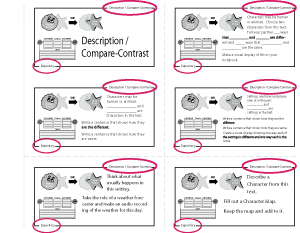
- I copied each set of questions (above: Descriptive Sequence for narrative and Description/Compare-Contrast for expository), laminated them, and then added a magnet to the back of each.


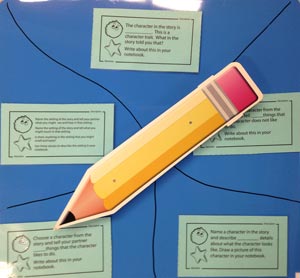 Using a dry erase magnetic board that I already had, I created a simple spinning game as shown. Each child took a turn spinning the arrow and then responding accordingly. This could be done orally, individually or with a partner if you are directly working with the group; or this may be set up as a center with each child spinning and then writing his/her response in their response notebook.
Using a dry erase magnetic board that I already had, I created a simple spinning game as shown. Each child took a turn spinning the arrow and then responding accordingly. This could be done orally, individually or with a partner if you are directly working with the group; or this may be set up as a center with each child spinning and then writing his/her response in their response notebook.- The narrative cards are easily removed and the expository cards put in place.

- Blending both narrative and expository questions together is another available option depending on the reading selection and your goals for the students involved. The flexibility of these questions becomes apparent when a group of students are at another narrative stage, you may use the corresponding cards. The cards are also an excellent way to reinforce stages of narrative development both in the classroom or in therapy groups. You may also choose certain questions to present to your students depending on your goals to help plot progress.
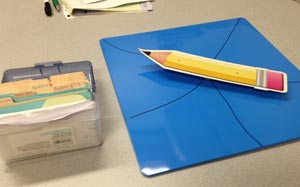 Store the cards in the file box for easy access. Your notes about student participation can be kept in the box for entry onto progress sheets.
Store the cards in the file box for easy access. Your notes about student participation can be kept in the box for entry onto progress sheets.
Sheila Zagula
Sheila Zagula works with MindWing Concepts in product development, drawing on her expertise and talents as well as many years of implementing the Story Grammar Marker® and related materials. Her teaching career spans thirty-eight years, most recently as literacy coach in the Westfield Massachusetts Public School System. Sheila has experience as an early childhood educator, a teacher of children with special needs, and a collaborative instructor within an inclusion framework serving children in grades K-5.
Leave a comment.
Comments will be approved before showing up.

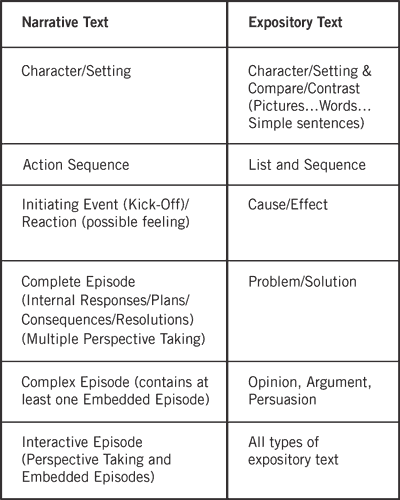
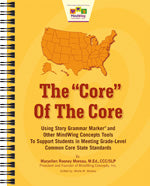
 Using a dry erase magnetic board that I already had, I created a simple spinning game as shown. Each child took a turn spinning the arrow and then responding accordingly. This could be done orally, individually or with a partner if you are directly working with the group; or this may be set up as a center with each child spinning and then writing his/her response in their response notebook.
Using a dry erase magnetic board that I already had, I created a simple spinning game as shown. Each child took a turn spinning the arrow and then responding accordingly. This could be done orally, individually or with a partner if you are directly working with the group; or this may be set up as a center with each child spinning and then writing his/her response in their response notebook. Store the cards in the file box for easy access. Your notes about student participation can be kept in the box for entry onto progress sheets.
Store the cards in the file box for easy access. Your notes about student participation can be kept in the box for entry onto progress sheets.